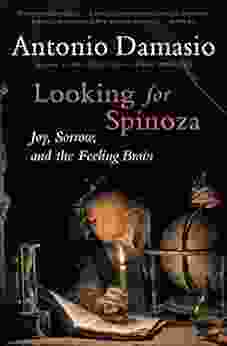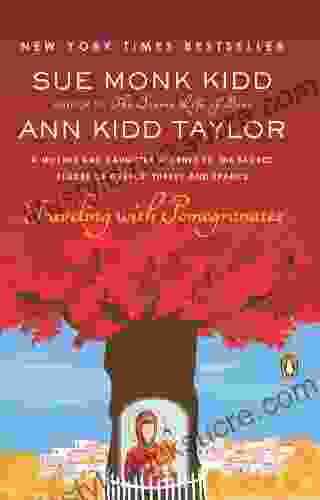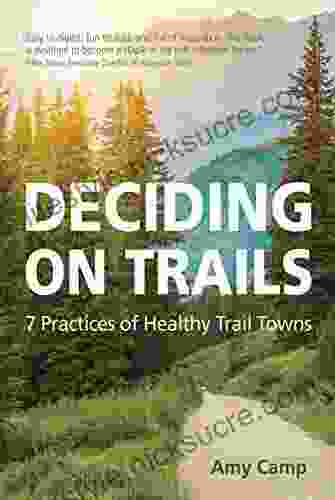Joy, Sorrow, and the Feeling Brain: A Comprehensive Exploration of Human Emotion

Emotions are a fundamental aspect of the human experience, shaping our thoughts, behaviors, and interactions with the world around us. From the elation of joy to the depths of sorrow, emotions play a crucial role in our lives. This article delves into the complex interplay of joy and sorrow, exploring the neural mechanisms underlying these emotions and their profound impact on our well-being.
The Anatomy of Joy
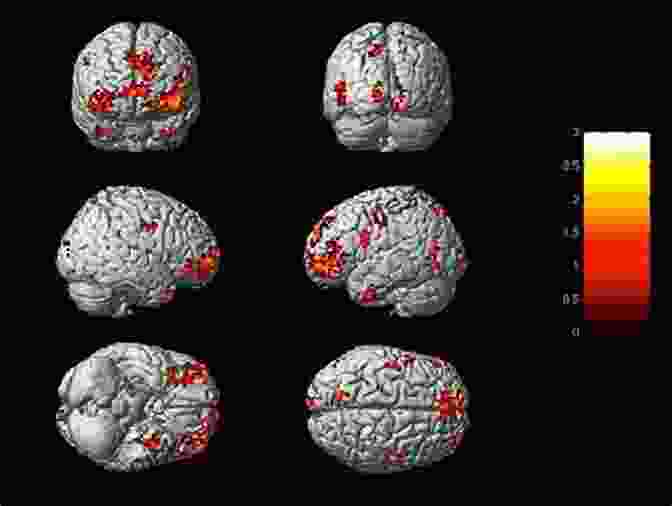
4.5 out of 5
| Language | : | English |
| File size | : | 10335 KB |
| Text-to-Speech | : | Enabled |
| Screen Reader | : | Supported |
| Enhanced typesetting | : | Enabled |
| X-Ray | : | Enabled |
| Word Wise | : | Enabled |
| Print length | : | 370 pages |
| Lending | : | Enabled |
Joy, an emotion characterized by intense pleasure and happiness, originates in the brain's reward pathways. The release of neurotransmitters such as dopamine and serotonin creates a sense of well-being and contentment. Joy is often associated with activities that satisfy our basic needs or bring us pleasure, such as eating delicious food, spending time with loved ones, or pursuing hobbies.
- Neurotransmitter Involvement: Dopamine plays a key role in the brain's reward system, triggering feelings of pleasure and reinforcement. Serotonin is also associated with joy and mood regulation.
- Brain Regions: The nucleus accumbens and ventral striatum are central to the reward pathway and are active during joyful experiences.
- Personality Traits: Individuals with higher levels of extraversion and neuroticism tend to experience more intense feelings of joy.
The Shadows of Sorrow
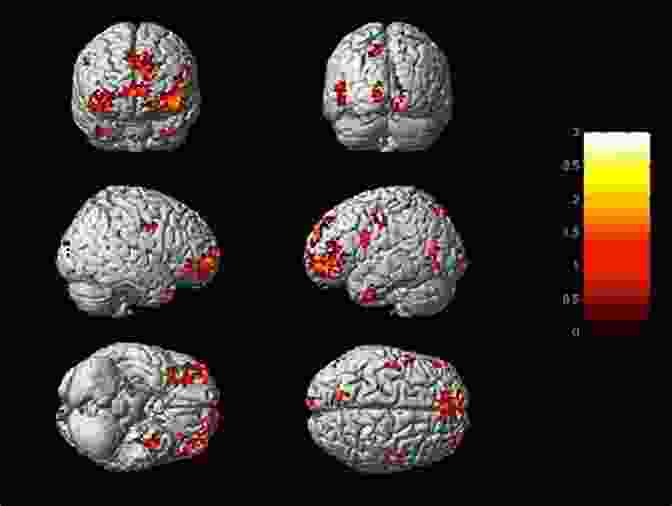
Sorrow, a profound emotion characterized by sadness and distress, is triggered by events that cause pain, loss, or disappointment. The brain's response to sorrow involves the activation of different neural circuits.
- Neurotransmitter Involvement: Cortisol and norepinephrine are stress hormones that are released in response to sorrowful experiences, creating physiological changes such as increased heart rate and blood pressure.
- Brain Regions: The amygdala, hippocampus, and prefrontal cortex play crucial roles in processing emotional information related to sorrow.
li>Personality Traits: Individuals with higher levels of neuroticism and lower levels of extraversion tend to experience more intense feelings of sorrow.
The Relationship Between Joy and Sorrow
Joy and sorrow are not mutually exclusive emotions; they often coexist within us. The contrast between these two emotions can provide a sense of perspective and appreciation for life's complexities.
- Emotional Complexity: Humans are capable of experiencing both joy and sorrow simultaneously, creating a nuanced emotional landscape.
- Cognitive Processing: The ability to recognize and process both positive and negative emotions is essential for emotional health.
- Coping Mechanisms: The presence of both joy and sorrow can influence our choice of coping mechanisms, such as seeking support or distraction.
The Impact of Joy and Sorrow on Well-being
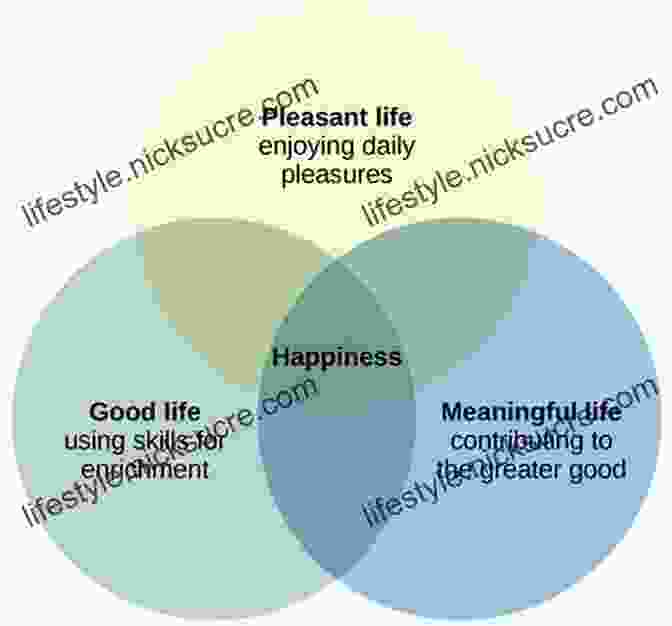
Emotions, both positive and negative, have a significant impact on our well-being.
- Positive Effects of Joy: Joy has been linked to improved physical and mental health, increased social connections, and enhanced creativity.
- Negative Effects of Sorrow: Prolonged or intense sorrow can lead to depression, anxiety, and physical health problems. However, experiencing sorrow can also facilitate growth and resilience.
- Emotional Regulation: The ability to regulate our emotions, both joyful and sorrowful, is crucial for maintaining a healthy emotional balance.
Cultivating Joy and Mitigating Sorrow

Understanding the neural and psychological mechanisms underlying joy and sorrow empowers us to take steps to cultivate positive emotions and manage negative ones.
- Gratitude Practices: Expressing gratitude for the good things in life can boost positive emotions and counterbalance sorrow.
- Social Connections: Nurturing strong relationships and engaging in social activities can provide a source of joy and support during times of sorrow.
- Mindfulness Meditation: Mindfulness techniques can help us stay present and appreciate the joyful moments while reducing the intensity of sorrow.
- Therapy: Seeking professional help can be beneficial in managing intense or prolonged grief and developing coping mechanisms.
- Self-Care: Prioritizing physical and emotional self-care, such as getting enough sleep, eating healthy, and exercising, can improve overall well-being and support emotional resilience.
Joy and sorrow are inseparable parts of the human experience. By understanding the neural mechanisms that underlie these emotions, their relationship, and their impact on our well-being, we can develop strategies to cultivate joy, mitigate sorrow, and navigate the emotional complexities of life. Embracing the full spectrum of emotions enables us to live richer, more meaningful, and authentic lives.
4.5 out of 5
| Language | : | English |
| File size | : | 10335 KB |
| Text-to-Speech | : | Enabled |
| Screen Reader | : | Supported |
| Enhanced typesetting | : | Enabled |
| X-Ray | : | Enabled |
| Word Wise | : | Enabled |
| Print length | : | 370 pages |
| Lending | : | Enabled |
Do you want to contribute by writing guest posts on this blog?
Please contact us and send us a resume of previous articles that you have written.
 Fiction
Fiction Non Fiction
Non Fiction Romance
Romance Mystery
Mystery Thriller
Thriller SciFi
SciFi Fantasy
Fantasy Horror
Horror Biography
Biography Selfhelp
Selfhelp Business
Business History
History Classics
Classics Poetry
Poetry Childrens
Childrens Young Adult
Young Adult Educational
Educational Cooking
Cooking Travel
Travel Lifestyle
Lifestyle Spirituality
Spirituality Health
Health Fitness
Fitness Technology
Technology Science
Science Arts
Arts Crafts
Crafts DIY
DIY Gardening
Gardening Petcare
Petcare Nikala Smith
Nikala Smith David Guymer
David Guymer Amelia Freer
Amelia Freer Gal Dem
Gal Dem Julie Schacht Sway
Julie Schacht Sway Joan Freeman
Joan Freeman Laura Slinn
Laura Slinn Carlo Buzzichelli
Carlo Buzzichelli Jennifer Margulis
Jennifer Margulis Elise Christie
Elise Christie Nikhil Bhardwaj
Nikhil Bhardwaj Jim Santos
Jim Santos Amiee Mueller
Amiee Mueller Amy Brown
Amy Brown Dmv Test Bank
Dmv Test Bank Christopher Cousteau
Christopher Cousteau Kathy Spratt
Kathy Spratt Mariano Anaya
Mariano Anaya Don Stradley
Don Stradley Jennifer S Kelly
Jennifer S Kelly Dave Hanson
Dave Hanson Jonathon Miller Weisberger
Jonathon Miller Weisberger Amber Lee Sellers
Amber Lee Sellers Mike Adamick
Mike Adamick Katherine Kurtz
Katherine Kurtz Kasie West
Kasie West Jack Tupp
Jack Tupp Stephen M Barr
Stephen M Barr Elizabeth S Gilbert
Elizabeth S Gilbert Chad Starkey
Chad Starkey Amber Foster
Amber Foster Catherine Dees
Catherine Dees American Baseball Coaches Association
American Baseball Coaches Association Marina Robb
Marina Robb Joe Nickell
Joe Nickell Django Paris
Django Paris Swede Burns
Swede Burns Kresley Cole
Kresley Cole Amber Zygutis
Amber Zygutis Stephen Goodwin
Stephen Goodwin Sarah Woodbury
Sarah Woodbury Pico Iyer
Pico Iyer Don Orwell
Don Orwell Dana Obleman
Dana Obleman Amber Smith
Amber Smith Robert W D Ball
Robert W D Ball Pinky Mckay
Pinky Mckay Theresa Y Wee M D
Theresa Y Wee M D K M Shea
K M Shea Wolf Moon
Wolf Moon William Rosen
William Rosen William G Dever
William G Dever Henry A Zumbrun 2
Henry A Zumbrun 2 Rich Rousseau
Rich Rousseau Toni Tone
Toni Tone Rick Deutsch
Rick Deutsch Kezia Endsley
Kezia Endsley Mitt Romney
Mitt Romney Don Mann
Don Mann Ellie Wood
Ellie Wood Susan White
Susan White Sandra Luna Mccune
Sandra Luna Mccune Sue Monk Kidd
Sue Monk Kidd Shanna Cunning
Shanna Cunning Kenneth P Stephens
Kenneth P Stephens Philip Gibson
Philip Gibson Larry K Brendtro
Larry K Brendtro Jean Van T Hul
Jean Van T Hul Paul Wieland
Paul Wieland Hadley Wickham
Hadley Wickham Temple Grandin
Temple Grandin Nisha Garg
Nisha Garg Douglas Wilson
Douglas Wilson Grant Dever
Grant Dever Byron Nelson
Byron Nelson Joel Cotton
Joel Cotton Krystal Sutherland
Krystal Sutherland John L Field
John L Field Helena P Blavasky
Helena P Blavasky Richard Cohen
Richard Cohen Andrey Ryanskiy
Andrey Ryanskiy Dr Scott A Johnson
Dr Scott A Johnson Gia Giasullo
Gia Giasullo Jeff Martone
Jeff Martone J Marin Younker
J Marin Younker Paul Dickson
Paul Dickson Guillaume Haeringer
Guillaume Haeringer Paul Oliver
Paul Oliver Stanley I Greenspan
Stanley I Greenspan Pav Bryan
Pav Bryan Laekan Zea Kemp
Laekan Zea Kemp Mark Worden
Mark Worden Alex Polyakov
Alex Polyakov Amira Mikhail
Amira Mikhail Eric Zweig
Eric Zweig Amie Kaufman
Amie Kaufman Torey L Hayden
Torey L Hayden Andy Couturier
Andy Couturier Joellen Patterson
Joellen Patterson P Aarne Vesilind
P Aarne Vesilind Eric E Bowne
Eric E Bowne Neville Goddard
Neville Goddard Tahlia Kirk
Tahlia Kirk Philippa Langley
Philippa Langley Derrick Jensen
Derrick Jensen Ned Seaton
Ned Seaton Cookie O Gorman
Cookie O Gorman Timothy Malcolm
Timothy Malcolm Ruth M Tappen
Ruth M Tappen Tamora Pierce
Tamora Pierce Robyn Davidson
Robyn Davidson Lisa Zimmer Hatch
Lisa Zimmer Hatch Amrita Pande
Amrita Pande Karen Deerwester
Karen Deerwester Oscar Baechler
Oscar Baechler Muhammad Vandestra
Muhammad Vandestra Nathan Belofsky
Nathan Belofsky Sheri Van Dijk
Sheri Van Dijk Kris Leonard
Kris Leonard Angela Moore
Angela Moore Cynthia Gabriel
Cynthia Gabriel Eugene C Toy
Eugene C Toy Alan Margot
Alan Margot Edward J Denecke
Edward J Denecke Kumo Kagyu
Kumo Kagyu James P Kelly
James P Kelly Ignatius Donnelly
Ignatius Donnelly Chad Ford
Chad Ford Christopher E Larsen
Christopher E Larsen Ana And Jack Hicks
Ana And Jack Hicks Deborah Lipsky
Deborah Lipsky Cole Hersowitz
Cole Hersowitz Vinod Kumar Khanna
Vinod Kumar Khanna Nicholeen Peck
Nicholeen Peck Liz Fosslien
Liz Fosslien Shalabh Aggarwal
Shalabh Aggarwal Erik Qualman
Erik Qualman Arlene Blum
Arlene Blum J Stephen Jones
J Stephen Jones Anne Chambers
Anne Chambers John Lukacs
John Lukacs Amante P Marinas
Amante P Marinas Amir Alexander
Amir Alexander Rosanna Davison
Rosanna Davison David Grinspoon
David Grinspoon Joe Dan Lowry
Joe Dan Lowry Robb Walsh
Robb Walsh Amber O Neal Johnston
Amber O Neal Johnston Victoria Wood
Victoria Wood Marco Ferrero
Marco Ferrero The 60 Minutes Summary
The 60 Minutes Summary Norman Doidge
Norman Doidge Josh Taylor
Josh Taylor Joseph P Weir
Joseph P Weir Jan E Stets
Jan E Stets Md Rezowan Ahmed
Md Rezowan Ahmed Amy Camp
Amy Camp Trent Shelton
Trent Shelton Jeffrey Steadman
Jeffrey Steadman Pamela Lynn
Pamela Lynn Spike Dykes
Spike Dykes Claudia J Carr
Claudia J Carr Vivian Vande Velde
Vivian Vande Velde Jd Mader
Jd Mader David Salsburg
David Salsburg Topher Donahue
Topher Donahue Ray Mancini
Ray Mancini Rosalind Wiseman
Rosalind Wiseman Tijan
Tijan Denise Ni
Denise Ni Amber Lia
Amber Lia Kyle Hunt
Kyle Hunt Chris Carlsson
Chris Carlsson Jayson Gaddis
Jayson Gaddis Sarah Sumbal
Sarah Sumbal Kate Parham Kordsmeier
Kate Parham Kordsmeier Candida Lawrence
Candida Lawrence Brendan Leonard
Brendan Leonard Charles Hall
Charles Hall Therese A Rando
Therese A Rando David Burch
David Burch Helen E Fisher
Helen E Fisher Michelle Newhart
Michelle Newhart Alex Stone
Alex Stone Stephen Walker
Stephen Walker Chloe Gong
Chloe Gong Warren B Powell
Warren B Powell Jon Bonnell
Jon Bonnell Joseph Wayne Smith
Joseph Wayne Smith Joseph Klaits
Joseph Klaits Ruta Nonacs
Ruta Nonacs Robert Melillo
Robert Melillo Rachel Gurevich
Rachel Gurevich Art Star
Art Star Courtney Defeo
Courtney Defeo Stephenie Meyer
Stephenie Meyer David Yoon
David Yoon Julie Caplin
Julie Caplin Janet Engle
Janet Engle Robert A Weinberg
Robert A Weinberg Vicki Hearne
Vicki Hearne Erika Napoletano
Erika Napoletano Charles J Alsheimer
Charles J Alsheimer William Bohan
William Bohan Amara Charles
Amara Charles Redmond O Hanlon
Redmond O Hanlon American Psychological Association
American Psychological Association Donovan Hohn
Donovan Hohn Jocelyn Goodwin
Jocelyn Goodwin Jeremy J Baumberg
Jeremy J Baumberg Andy Singleton
Andy Singleton Deborah J Rumsey
Deborah J Rumsey Michael Reichert
Michael Reichert J L Weil
J L Weil Tracy Lorraine
Tracy Lorraine Anthony Haynes
Anthony Haynes Ned Vizzini
Ned Vizzini Joe E Harvey
Joe E Harvey Gary Wiener
Gary Wiener Suzanne Stabile
Suzanne Stabile Benjamin Jelen
Benjamin Jelen Zeshan Qureshi
Zeshan Qureshi Mac Fortner
Mac Fortner Jack Weatherford
Jack Weatherford Jason Thompson
Jason Thompson Jacob Bronowski
Jacob Bronowski Josiah Hesse
Josiah Hesse Harley Reid
Harley Reid Rob Fisher
Rob Fisher Md Mahady Hasan
Md Mahady Hasan Candy Verney
Candy Verney Lizabeth Hardman
Lizabeth Hardman Amy Perry
Amy Perry L Frank Baum
L Frank Baum Bill Carter
Bill Carter Theodore Sider
Theodore Sider Maria Youtman
Maria Youtman Kathleen Glasgow
Kathleen Glasgow Brian Klaas
Brian Klaas Paul Kockelman
Paul Kockelman Amit Saha
Amit Saha Victoria Richards
Victoria Richards John Ferrell
John Ferrell Valerie Bass
Valerie Bass Patrick O Sullivan
Patrick O Sullivan Ronda Rousey
Ronda Rousey Tim Hornbaker
Tim Hornbaker Amy Mccready
Amy Mccready Glenn Stout
Glenn Stout Theresa I Soto
Theresa I Soto Jack Ewing
Jack Ewing Michael Parker Pearson
Michael Parker Pearson Brian Pace
Brian Pace Kevin Stiegelmaier
Kevin Stiegelmaier Tim Marshall
Tim Marshall Laurie A Watkins
Laurie A Watkins Peter Worley
Peter Worley Dom Amore
Dom Amore Fred Pyrczak
Fred Pyrczak C W Lockhart
C W Lockhart Tom Colicchio
Tom Colicchio Sharon K Zumbrunn
Sharon K Zumbrunn Elizabeth Lim
Elizabeth Lim Rob Antoun
Rob Antoun Traci Gormley
Traci Gormley Frank Nappi
Frank Nappi Victor J Stenger
Victor J Stenger Dima Zales
Dima Zales Martin Pollizotto
Martin Pollizotto Cordelia K Castel
Cordelia K Castel James W Williams
James W Williams Patricia L Papernow
Patricia L Papernow Steven Charleston
Steven Charleston Rick Stanton
Rick Stanton Sarah Dessen
Sarah Dessen Dan Abnett
Dan Abnett Naomi Oreskes
Naomi Oreskes John Maxwell Wood
John Maxwell Wood Leslie Sansone
Leslie Sansone Stanley J Farlow
Stanley J Farlow Stephen Barr
Stephen Barr Meikang Qiu
Meikang Qiu Rodney M Howard Browne
Rodney M Howard Browne Jack Falla
Jack Falla Isabella Krystynek
Isabella Krystynek Nick Kolenda
Nick Kolenda Sandra Bardwell
Sandra Bardwell Lars Andersen
Lars Andersen Craig Larman
Craig Larman Saleh Alkhalifa
Saleh Alkhalifa James E Packer
James E Packer Kristine Kathryn Rusch
Kristine Kathryn Rusch Sheena Johnstone
Sheena Johnstone Peter Hayes
Peter Hayes Marit Weisenberg
Marit Weisenberg Eugenia Viti
Eugenia Viti Eric Tyndall
Eric Tyndall Ashley Scott
Ashley Scott Tanya Turner
Tanya Turner Desi Northup
Desi Northup Erin Chack
Erin Chack Anthony Horowitz
Anthony Horowitz C L Simchick
C L Simchick Kate Tietje
Kate Tietje Christina Kamp
Christina Kamp James Mullaney
James MullaneyK D
 Jenny Landreth
Jenny Landreth Mark Turley
Mark Turley A Sorority Of Mothers
A Sorority Of Mothers Cheri Rae
Cheri Rae Lady Antiva
Lady Antiva Amy Bleuel
Amy Bleuel Vince Kotchian
Vince Kotchian Amy Bizzarri
Amy Bizzarri Christopher Harlan
Christopher Harlan Amelia Parker
Amelia Parker Kieron Gillen
Kieron Gillen Shaun Gallagher
Shaun Gallagher Jonathan Law
Jonathan Law Tom Patri
Tom Patri Don Bowers
Don Bowers Deborah Vinall Psyd Lmft
Deborah Vinall Psyd Lmft Ryan Gray
Ryan Gray Michaela Riva Gaaserud
Michaela Riva Gaaserud Jean Christie Ashmore
Jean Christie Ashmore Brittany Clair
Brittany Clair Jeff Gaudette
Jeff Gaudette Frederick Lenz
Frederick Lenz Terry Wieland
Terry Wieland Louise Bates Ames
Louise Bates Ames Paul Schwartz
Paul Schwartz Michael Cosgrove
Michael Cosgrove Bethanne Kim
Bethanne Kim Tom Deck
Tom Deck Steven C Hayes
Steven C Hayes Gail Maccoll
Gail Maccoll Erica T Lehrer
Erica T Lehrer Brian Kateman
Brian Kateman Howard J Meditz
Howard J Meditz Charles Thompson
Charles Thompson Alexandrea Weis
Alexandrea Weis Paul Kaplowitz
Paul Kaplowitz Amby Cooper
Amby Cooper Thom Hartmann
Thom Hartmann Shannon O Bourne
Shannon O Bourne Joseph Howse
Joseph Howse Sean Go
Sean Go Laini Taylor
Laini Taylor Joe Dante
Joe Dante Amie Lands
Amie Lands Tyler Simmons
Tyler Simmons Johan Norberg
Johan Norberg Jean Rose
Jean Rose Sean Gibson
Sean Gibson Shere Hite
Shere Hite Bridget Ericsson
Bridget Ericsson John Mcpherson
John Mcpherson Devin Olsen
Devin Olsen Danny Dreyer
Danny Dreyer Joseph Mcmoneagle
Joseph Mcmoneagle Ken Chaddock
Ken Chaddock Roman Gelperin
Roman Gelperin Tabitha Suzuma
Tabitha Suzuma Richard Wagamese
Richard Wagamese Dr Bob Rotella
Dr Bob Rotella Marisa Anne Bass
Marisa Anne Bass Jan Marie Mueller
Jan Marie Mueller Silvia Botros
Silvia Botros Tom Taulli
Tom Taulli Holly Herrick
Holly Herrick Diane Greer
Diane Greer Mark W T Harvey
Mark W T Harvey Trevor Day
Trevor Day Chris Irons
Chris Irons June Cl Tan
June Cl Tan Michael Abayomi
Michael Abayomi Paul Graham
Paul Graham Garrett M Fitzmaurice
Garrett M Fitzmaurice Michael Winkelman
Michael Winkelman Buck Tilton
Buck Tilton Gerald Corey
Gerald Corey Christine Fanthome
Christine Fanthome Jonathan Bartlett
Jonathan Bartlett William Glasser M D
William Glasser M D Sarah Morgan Haydock
Sarah Morgan Haydock Nicholas A Christakis
Nicholas A Christakis Stephen J Collier
Stephen J Collier Jason Borte
Jason Borte Jake Maddox
Jake Maddox Jessica Hatcher Moore
Jessica Hatcher Moore Steve Greenberg
Steve Greenberg Alan I Marcus
Alan I Marcus Summer Michaud Skog
Summer Michaud Skog Marshall Goldsmith
Marshall Goldsmith Dan Schlossberg
Dan Schlossberg Martin Williams
Martin Williams Jessica Cunsolo
Jessica Cunsolo Amelia Edith Huddleston Barr
Amelia Edith Huddleston Barr American Math Academy
American Math Academy Clancy Cavnar
Clancy Cavnar Amy Blakeslee
Amy Blakeslee Clotaire Rapaille
Clotaire Rapaille Michael R Poll
Michael R Poll Malba Tahan
Malba Tahan Kathy A Zahler
Kathy A Zahler Mark Taylor
Mark Taylor Emma Mae Jenkins
Emma Mae Jenkins Doug Peterson
Doug Peterson Ruth Nestvold
Ruth Nestvold Heather Macfadyen
Heather Macfadyen Matthew L Martin
Matthew L Martin Camille Glenn
Camille Glenn Michael Ondaatje
Michael Ondaatje Tavi Gevinson
Tavi Gevinson Adam Cort
Adam Cort Mark Stallard
Mark Stallard Sarah J Maas
Sarah J Maas Catherine Ryan Gregory
Catherine Ryan Gregory David Ranney
David Ranney Eric T Knight
Eric T Knight Jack Freeman
Jack Freeman Reinhold Messner
Reinhold Messner Matthew Lombardi
Matthew Lombardi Umer W
Umer W Amy Baldwin
Amy Baldwin Joseph Conrad
Joseph Conrad E T Bryant
E T Bryant Kathleen M Stacy
Kathleen M Stacy Randy Schultz
Randy Schultz Wendy Margolis
Wendy Margolis Nina Freudenberger
Nina Freudenberger Anna B Doe
Anna B Doe Jenni Hicks
Jenni Hicks Susanna Heli
Susanna Heli Donna Williams
Donna Williams Amy Adele Hasinoff
Amy Adele Hasinoff Test Masters
Test Masters John A Buehrens
John A Buehrens Randall E Schumacker
Randall E Schumacker George Bernard Shaw
George Bernard Shaw Sterling Test Prep
Sterling Test Prep Sian Warriner
Sian Warriner Dr Elizabeth Cherevaty Nd Rac
Dr Elizabeth Cherevaty Nd Rac Josephine Atluri
Josephine Atluri William Stillman
William Stillman Sonia Hartl
Sonia Hartl Jeanne Ryan
Jeanne Ryan Sandra T Barnes
Sandra T Barnes Thomas J Whalen
Thomas J Whalen Andy Hunt
Andy Hunt K F Breene
K F Breene Ananda Lowe
Ananda Lowe Lisa Maloney
Lisa Maloney Gina Chen
Gina Chen Derek Thompson
Derek Thompson John Jacobs
John Jacobs John Bingham
John Bingham Jameson M Wetmore
Jameson M Wetmore Julie Barlow
Julie Barlow Jerry D Moore
Jerry D Moore Dolores Kong
Dolores Kong Melody Schreiber
Melody Schreiber Rose Mannering
Rose Mannering Peter Larson
Peter Larson Iain Pardoe
Iain Pardoe Wade Rouse
Wade Rouse David Elkington
David Elkington Bruce Dowbiggin
Bruce Dowbiggin Julie Mosier
Julie Mosier Autumn Jordon
Autumn Jordon Heidi J Larson
Heidi J Larson Antonio R Damasio
Antonio R Damasio Jack Nisbet
Jack Nisbet Amy B Middleman
Amy B Middleman H Bedford Jones
H Bedford Jones Cathy Williams
Cathy Williams Cody Monk
Cody Monk Kate Fox
Kate Fox
Light bulbAdvertise smarter! Our strategic ad space ensures maximum exposure. Reserve your spot today!
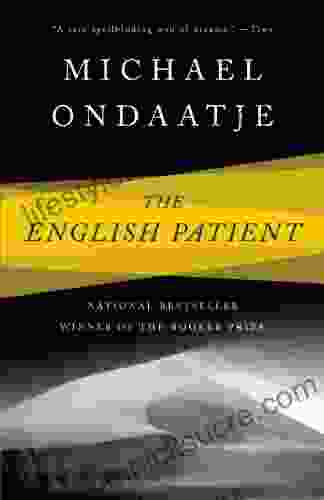
 Chris ColemanThe English Patient: A Haunting and Unforgettable Story of Love, Loss, and...
Chris ColemanThe English Patient: A Haunting and Unforgettable Story of Love, Loss, and... Preston SimmonsFollow ·15.1k
Preston SimmonsFollow ·15.1k Natsume SōsekiFollow ·4.6k
Natsume SōsekiFollow ·4.6k Harold PowellFollow ·8.2k
Harold PowellFollow ·8.2k Terence NelsonFollow ·18.5k
Terence NelsonFollow ·18.5k Gene PowellFollow ·16.4k
Gene PowellFollow ·16.4k Vernon BlairFollow ·8.1k
Vernon BlairFollow ·8.1k Heath PowellFollow ·5.3k
Heath PowellFollow ·5.3k Jayson PowellFollow ·13.8k
Jayson PowellFollow ·13.8k

 Ira Cox
Ira CoxUnveiling the Hidden Gem: Moon, Virginia - A Washington...
Nestled within the picturesque...

 Jorge Luis Borges
Jorge Luis BorgesThe Ultimate Survivalist's Medical Guide: A Comprehensive...
In the realm of...

 Henry Green
Henry GreenDavid Douglas: Exploring the Natural History of the...
David Douglas was a...
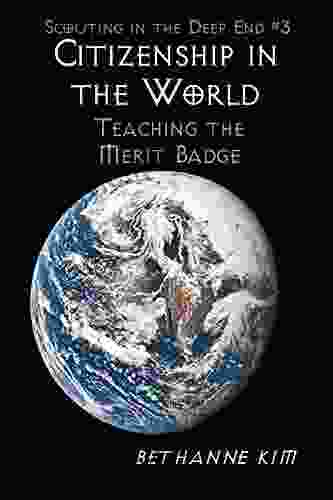
 Eric Hayes
Eric HayesUnderstanding Citizenship in a Globalized World: A...
Citizenship is a complex and multifaceted...

 Will Ward
Will WardUnveiling Research Real Talk: Navigating the Labyrinth of...
Research, the...
4.5 out of 5
| Language | : | English |
| File size | : | 10335 KB |
| Text-to-Speech | : | Enabled |
| Screen Reader | : | Supported |
| Enhanced typesetting | : | Enabled |
| X-Ray | : | Enabled |
| Word Wise | : | Enabled |
| Print length | : | 370 pages |
| Lending | : | Enabled |


